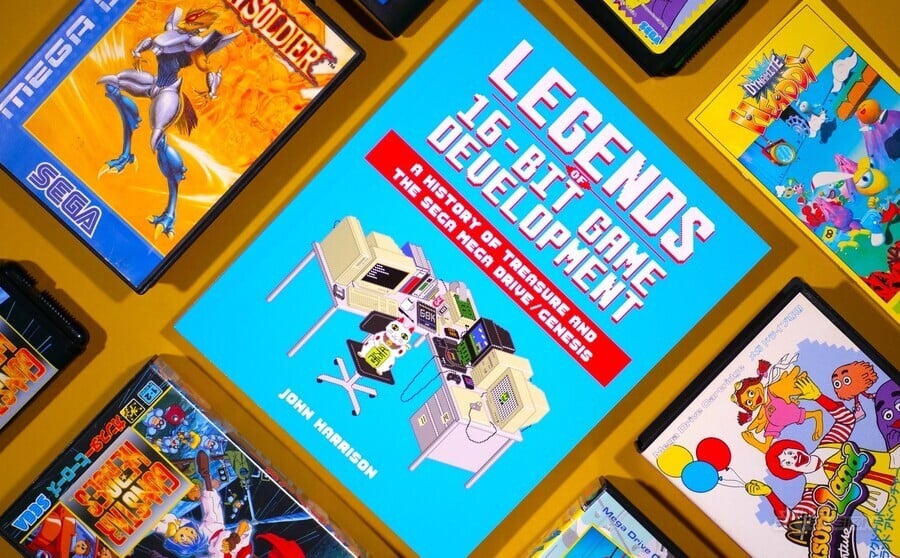
While titles like Radiant Silvergun and Ikaruga still have the power to attract attention today (the former recently came to Switch and arrives on Steam soon), it's fair to say that Japanese developer Treasure's best days are well and truly behind it. Its last game was 2014's Gaist Crusher God, and the company's activities today seem to be mostly focused on making its prestigious back catalogue available on modern systems.
And what a back catalogue Treasure has; during the '90s, the firm was responsible for some of the most innovative and downright playable video games of the era. From the joyous 2D excess of Mega Drive games like Gunstar Heroes and Alien Soldier to the dazzling 3D visuals of Sin & Punishment and Gradius V, Treasure became the studio of choice for 'hardcore' gamers; a company which took pride in putting killer gameplay above everything else.
It's amazing, then, that no one has ever really tackled the history of Treasure in book form, but thankfully, historian and diehard Sega fan John Harrison has given us one of the most comprehensive summaries of the firm's early history in Legends Of 16-Bit Game Development, a book which focuses exclusively on the six games Treasure creatures on the Mega Drive / Genesis: Gunstar Heroes, McDonald's Treasure Land Adventure, Dynamite Headdy, Yu Yu Hakusho Makyō Tōitsusen, Alien Soldier and Light Crusader.
Based on a wide range of sources – including interviews from contemporary Japanese video game magazines and other media, translated by Harrison himself – the book digs into each game in an astonishing level of detail, even going as far as to break down key sequences of each title via screenshots and explain regional differences (of which there are a staggering number in Dynamite Headdy). Add in a wealth of concept art, photos and commentary from the developers, and it's no exaggeration to say that this book represents the most laser-focused investigation of these half-dozen games you'll find anywhere.
In addition to this, Harrison also includes a lengthy opening chapter which discusses Treasure's formation and the early career of its co-founder and president, Masato Maegawa, who was previously employed by Konami and worked on the likes of Castlevania: The Adventure and Bucky O'Hare. A second introductory chapter does an excellent job of setting the scene at Sega and explaining why the company began working so closely with 'second party' studios like Climax (Shining in the Darkness), GAU Entertainment (Ranger X), Ancient (Beyond Oasis / Story of Thor) and Treasure. There's even an appendix at the end which discusses the many graphics modes of the Mega Drive itself, giving the reader a little more insight into the magic Treasure was able to weave with the system.
We can comfortably say that Legends Of 16-Bit Game Development is the most exhaustive book on Treasure's history ever published in English, and we sincerely hope that Harrison is able to expand it into a series which covers the company's 32-bit exploits, too.
Scholarly, detailed and bursting with passion for the subject matter, the only real negative we can level at this book is that it makes you pine for Treasure's glory days, which sadly seem like a distant memory.
Please note that some external links on this page are affiliate links, which means if you click them and make a purchase we may receive a small percentage of the sale. Please read our FTC Disclosure for more information.
